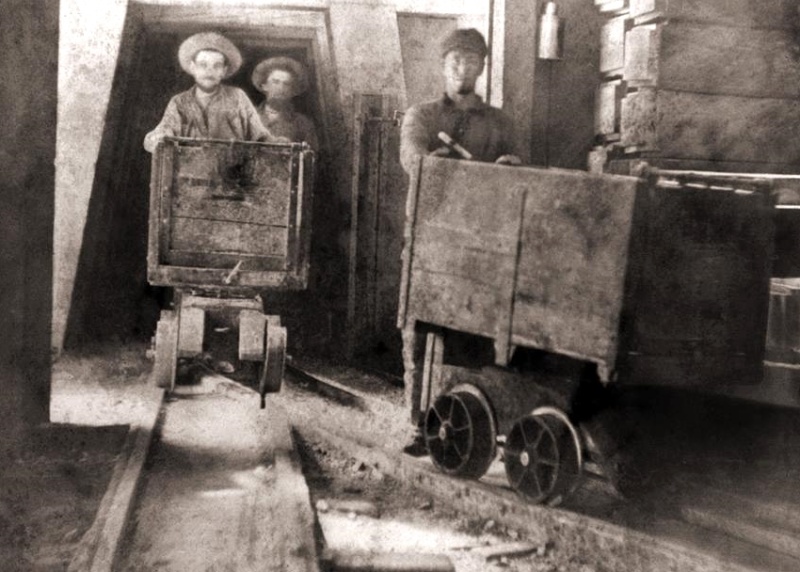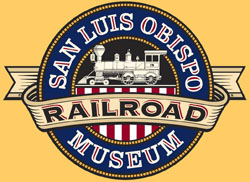Mine ore cart currently on display in the Museum.

Typical usage of a mine ore cart.
Mine Ore Cart
Return to QR Index
Original owner: The Sesena family lived in the San Luis Obispo area and began mining in the southern part of San Luis Obispo County, east of Nipomo, near present-day Highway 166, on Stephens Creek Road. The mine which the family eventually developed was named the Deer Trail Mine and operated from 1915 to 1941. This cart was donated by Robert and Richard Sesena on May 5, 1999.
Built: Builder and Date unknown (probably circa early 1900's)
Mine Cart on Exhibit: The car in the San Luis Obispo Railroad Museum is made of steel parts, riveted together, with a swiveling 4 wheel truck (frame and wheels). This allows the car to be turned to either side to facilitate the dumping of ore from the car end door. That door is hinged at the top, which allows the door to close by gravity.
Mine Cart Purpose: Mine Carts have been used as early as the 1700's, and were the first use of flanged wheels on rails. Mine carts were ore transportation vehicles. Prior to the invention of wheeled ore carts, miners or pack animals carried ore out of mines. These carts removed the heavy burden and allowed miners to apply their efforts to ore extraction. The carts were pushed by miners, over narrow gauge tracks, to the location in the mine where ore was removed from the rock. It was loaded into the carts and pushed out of the mine to a dump area.
Eventually, the advantages of steel wheels riding on steel rails were noticed and, as the need to transport people and freight became more important, the vehicles became larger, powered by engines, and became known as railroading.
Cinnabar Ore Mining: Mine carts and track, along with pneumatic compressors and drills, were used locally for the removal of Cinnabar ore. The ultimate goal was the extraction of liquid mercury from the ore to sell to people who processed gold or for industrial and commercial uses. The peak of mercury mining occurred during the California gold rush in the mid-1800's, and during the 1st World War, 1915-1918. During that war, mercury was used by the federal government for military purposes.
Processing Cinnabar ore involved crushing the rock and heating it in furnaces until the mercury in the rock evaporated. The vapor was then condensed and collected as liquid mercury. Mercury was used for processing gold and for military purposes, but it is dangerous and can cause deaths when it isn't regulated. Mercury is not widely used in consumer products today.
Return to QR Index

